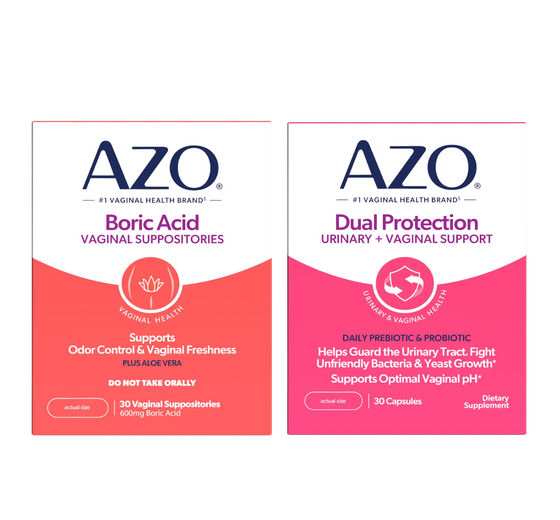
Understanding Pain After Sex: Causes and Solutions
Pain after sex is more common than you might think. According to the American College of Obstetricians and Gynecologists, up to 75% of women experience this at some point in their lives. For some, it’s rare or happens only once, but for others, it can be a regular issue. Knowing why this happens is the first step to finding relief. Let’s explore the causes and solutions together, so you can take charge of your health and feel more comfortable.
In this article, we’ll talk about the causes of pain after sex, the role of urinary tract infections (UTIs), and how to treat and prevent this pain. This knowledge can help you have a more comfortable and fulfilling intimate life.
What Is Pain After Sex?
Post-coital pain, called dyspareunia, is a common problem for many women. It can happen to women of all ages and can affect their quality of life and relationships. Understanding dyspareunia causes and finding the right treatment is important for both your physical and emotional well-being.
Pain can be sharp, burning, or aching. It can happen during sex, right after, or even hours later. Common symptoms include:
- Sharp or stabbing pain in the vaginal area
- Burning or aching sensations
- Discomfort or pain during penetration
- Pain that lasts several hours after sex
- Tenderness or swelling in the genital area
Knowing these symptoms can help you talk to your doctor for a better diagnosis and treatment.
Common Causes of Pain After Sex
Pain after sex can be upsetting and might make you worry about future intimacy. Understanding the causes can help you find relief. Here are some common causes:
Physical Causes
- Infections and Inflammation: Conditions like infections or pelvic floor disorders can cause pain. Identifying and treating these can improve your well-being.
- Vaginal Dryness: Lack of lubrication can cause friction and pain during sex. This can be due to hormonal changes, menopause, breastfeeding, or medications. Using water-based lubricants can help.
- Urinary Tract Infections (UTIs): UTIs are a common cause of pain during and after sex. Bacteria can enter the urinary tract during sex, leading to infection and discomfort. Symptoms include a burning sensation during urination, frequent urges to urinate, and pelvic pain. Antibiotics treat UTIs, and products like AZO® D-Mannose Gummies can help maintain a healthy urinary tract*.
Psychological and Relationship Factors
- Stress and Anxiety: Emotional stress and anxiety can cause tension and pain during sex. Past traumatic experiences can also contribute. Counseling and stress management techniques can help.
- Communication Issues: Talking openly with your partner about sexual needs and discomforts is important for a fulfilling sexual relationship. Good communication can address issues and enhance intimacy.
- Insufficient Foreplay: Proper foreplay ensures arousal and natural lubrication. Rushing through or skipping foreplay can lead to dryness and pain. Taking time for foreplay can make sex more comfortable and enjoyable.
Treatment and Relief
Healthcare practitioners use various methods to find out why you’re experiencing pain after sex, including physical exams, urine tests, and imaging studies. Open communication with your doctor is important for accurate diagnosis and effective treatment.
Medical Treatments
- Medications: Depending on the cause, medications can provide significant relief. For UTIs, antibiotics are necessary. Hormonal issues causing vaginal dryness can be treated with hormone therapy. Anti-inflammatory medications can help reduce pain from infections or other conditions.
- Topical Treatments: Lubricants or vaginal moisturizers can manage dryness and reduce friction. Topical estrogen creams may be recommended for those experiencing dryness due to menopause or hormonal changes.
Home Treatments
- Warm Baths: Soaking in a warm bath can relax pelvic muscles and reduce pain.
- Pelvic Floor Exercises: Strengthening pelvic floor muscles through exercises like Kegels can improve muscle control and reduce pain.
Prevention Tips
Preventing pain after sex involves adopting healthy habits and lifestyle changes:
- Use Lubricants: Applying a water-based lubricant before intercourse can reduce friction and prevent dryness.
- Communicate with Your Partner: Open communication about sexual preferences and any discomfort can enhance intimacy and reduce pain.
- Practice Good Hygiene: Proper hygiene before and after sex can help prevent infections. This includes urinating after intercourse to flush out bacteria and ensuring both partners are clean.
When to Seek Medical Help
If pain after sex is persistent, severe, or accompanied by other symptoms like fever or unusual discharge, see a doctor. Early painful intercourse treatment can prevent complications and improve your quality of life.
Conclusion
Understanding and addressing pain after sex is crucial for your health and well-being. Recognizing the symptoms, exploring the causes, and seeking proper treatment can help manage and relieve discomfort. Open communication with partners and healthcare providers is essential for effective diagnosis and treatment. Remember, you’re not alone. With the right information, support, and proactive steps, you can achieve a more comfortable and fulfilling intimate life.
AZO® D-Mannose Gummies offer a daily solution to cleanse, flush, and protect the urinary tract, providing extra protection when it matters most*. For more sexual health information and resources, be sure to visit the AZO® Products blog.
has context menu








